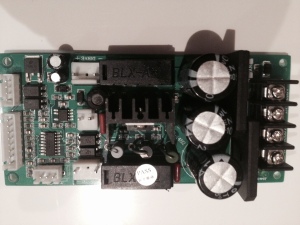It’s been a few weeks now, still haven’t actually cut anything proper like,
however, a BIG occasion, I can now JOG all 4 axis quite happily in Mach3!
for those looking everywhere (and I did), no-where really quite states obviously or easily the pins on the connector needed to control the 4th Axis, it’s pins 8 & 9
| Axis |
Step Pin# |
Dir Pin# |
| X Axis |
2 |
3 |
| Y Axis |
4 |
5 |
| Z Axis |
6 |
7 |
| A Axis |
8 |
9 |
And Also – another setting needed,
Under CONFIG – Homing / Limits.
Set Soft MAX and Soft MIN on A axis to ZERO, that’ll allow it to rotate forever.
Now, one plus side of getting the A axis to work, it uses the same stepper motors as the X,Y,Z. it should help me to be able to accuratley calibrate the system now as many websites suggest that the 400 steps per rotation is ‘off a bit’….
Here goes. Need to figure out ‘homing’ and how exactly the G-Code relates to the position on the table. most ‘dry runs’ so far have pushed the CNC past its limits…..which is annoying as i don’t have limit switches yet!



